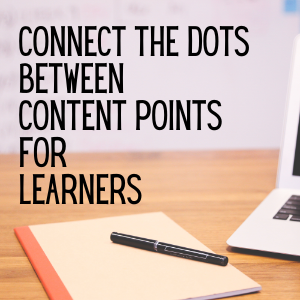How to Go Live: Thinking About Virtual Classroom Facilitation
We all know that organizations have had to quickly move face-to-face training to the virtual classroom. This seismic shift extends beyond...
3 min read
 Jennifer Lindsay-Finan
:
Jun 9, 2023 1:00:00 PM
Jennifer Lindsay-Finan
:
Jun 9, 2023 1:00:00 PM

The virtual facilitator is the term for the "face" of the live online learning: they are out front, with the learners, teaching content. So why aren’t they referred to as teachers? A facilitator is someone who makes an action or a process easier and who finds creative ways to engage students online. The term encompasses more than just “imparting knowledge.” In truth, we can only ever facilitate learning. Since all teachers are also facilitators, that’s the term we use.
[Enroll to Become a Certified Virtual Classroom Facilitator]
They are a “trainer, coach, and a mentor” (Karen Veith, VP of Services at InSync). They are the leader and lesson guide: they don’t focus on lecture, but rather provide an environment that empowers learners to take responsibility for their own learning in a live online learning setting.
Trainer. They help learners obtain new knowledge and skills.
Coach. They help learners apply new knowledge and skills.
Mentor. They guide learners toward mastery of new knowledge and skills.
[Download this infographic for a handy visual of the role.]
For a facilitator, it’s not enough just to master passing on content to learners—they must find creative ways to engage students online.
The instructional team is essential to the success of virtual classroom facilitators because the team provides the content. The facilitator must unite the design intent of the instructional team with the learner intent, acting as a bridge between the two through opportunities for collaboration, practice, and application.
They also work with the following people to ensure the best learning environment:
The Producer, who ensures technology supports learning rather than distracting from it and that all logistical needs are met. They work before the class to mitigate any risk of technology complications and have plans in place if something goes wrong.
Support Staff, including managers, the designer, and the instructional team, who help evaluate assignments, assess forum discussions, and support the application of skills and knowledge of the entire team.
This valuable interaction between the designer, facilitator, producer, and staff ensures the maximum opportunity for engagement through the entire program.
Nurturing. The facilitator must maintain an experience that is safe and enjoyable for all involved. They must be skilled at providing collaboration opportunities, asking relevant questions, evoking responses, and listening actively.
Stimulating. The facilitator must be adept at cultivating relevant conversations and then providing practical application and connection. They must stimulate synthesized knowledge through providing opportunities for practice and application.
Motivating. A facilitator must motivate learners to the point where they want to learn and then clear any obstacles to achievement. They must help learners realize the path to success in the learning environment, and motivate and encourage the learner to overcome any obstacles through community and support.
[Enroll to Become a Certified Virtual Classroom Facilitator]
Ensuring Universal Access. Facilitators must ensure that anyone who wants to participate can. This includes navigating the growing demand for hybrid training, integrating mobile devices in learning access, and making accommodations based on an individual learner’s situation.
Ensuring Universal Impact. A facilitator must make each moment count. Virtual programs are often shorter than a traditional learning environment. They must be able to make sure all key objectives are met in a way that is still engaging and accessible to each learner and allows them adequate practice and application by finding creative ways to engage students online.
Creating Universal Relationships. Facilitators must build strong relationships with each of their learners individually and with the larger group. With break times reduced and distance increased, this challenge is harder than ever, and must be done without side conversations or true body language.
Seeing Clarity. There’s nothing better than seeing those a-ha moments from your learners. Online chats and forums make these moments exceptionally accessible to both facilitator and learner.
Globalization. Live online learning settings have made it incredibly common to learn with members from all over the group. A facilitator can finally hear daily perspectives from Asia, Europe, America, and more all at the same time and without jet lag!
Unlimited Opportunity. Technology is always evolving, and being a virtual classroom facilitator means you always have an opportunity to learn a new skill or piece of knowledge yourself.
To become a Master Virtual Classroom Facilitator for a live online learning setting
Learn to go beyond interactive virtual classes and facilitate collaborative, engaging blended experiences
Learn to nurture emotional engagement
Stimulate learners intellectually
Foster environmental engagement no matter how the environment is constructed
Learn by immersing yourself in industry best practices
Don’t miss your chance to master this challenging and rewarding career. Take advantage of all the opportunities for hands-on practice in our Virtual Classroom Facilitation Mastery Series. [Click here to enroll to become a Virtual Classroom Facilitator.]

We all know that organizations have had to quickly move face-to-face training to the virtual classroom. This seismic shift extends beyond...

If you are a good virtual facilitator (and after the year we have all had, I bet you are!), you have quite a few enviable skills! You’ve mastered the...

If you’re an experienced virtual trainer, you know the frustrations of having participants distributed across the country or world. Keeping them...